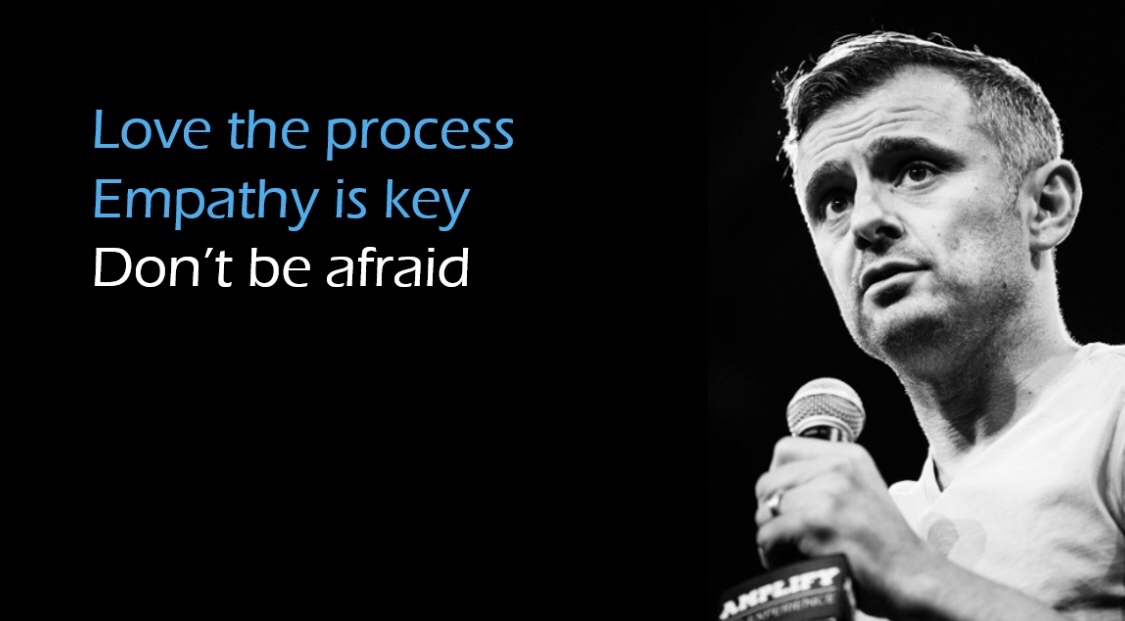L&D, if they want it, is rightly positioned to lead organizational social. At it’s very core social is about community, collaboration and sharing. Those last 2 are vehicles for knowledge, strategy and tactics to be transmitted and are how new ideas flourish and old problems are solved. L&D’s function is helping a business achieve optimal performance. At the recent DevLearn conference in Las Vegas I spoke about the key principles for organizational social to a full room of L&D practitioners. This one slide led the discussion about what holds them back!

First, yes, I channeled Gary Vaynerchuk for this one and snagged some of his key messages to entrepreneurs; love the process, empathy is key and stop being afraid. For L&D it goes down like this:
Love the process: The process is the problems of the business. Love what keeps the CEO up at night. Don’t love your tools and your skills. Don’t let your technology and tried-n-true processes dictate the solutions. Just because you can create a course (really, really well), doesn’t mean you should. Most problems can be solved with non-training solutions with the biggest solution being better connection between those who know and those who don’t; coaching, mentoring or just space to have fabulous exchanges. Open up the playbook on learning, it’s not just training.
Empathy is key: For Gary’s entrepreneurial audience this means really listening and watching the customer. What’s really at issue? What’s their pain? Watching and listen is as close as you can get to be in their shoes. L&D needs to watch and listen how work is being done. Where are the hot spots of connection and collaboration? Can these be supported/augmented with social technology? What are the barriers to conversation and sharing? Surface them, even if they are structural or systemic and aren’t why you were hired.
And to that last point… why you were hired…
Don’t be Afraid: Again Gary laments all those who worry what others will think if they go out on a limb. For L&D, you often feel you were hired to create training. Maybe your title is Manager of Training or Instructional Designer. But here’s the cold hard fact, you know learning and what it takes for someone to learn. Stop being afraid of the perception and the repercussions. Do what’s right, and what’s right is fixing performance problems AND heading them off as quickly as possible. None of this means bury your training role, it means embracing the power of greater connection in the organization.
L&D is primed. If they don’t take the reins someone will, someone less understanding of the psychology and sociology of learning. At best you’ll be making more meaningful training because social interaction will solve many problems before training is requested. At worst, these powerfully connecting tools will be used to just hear from the CEO once in a while, share birthday wishes, vacation pictures and time off notifications. What a waste.

